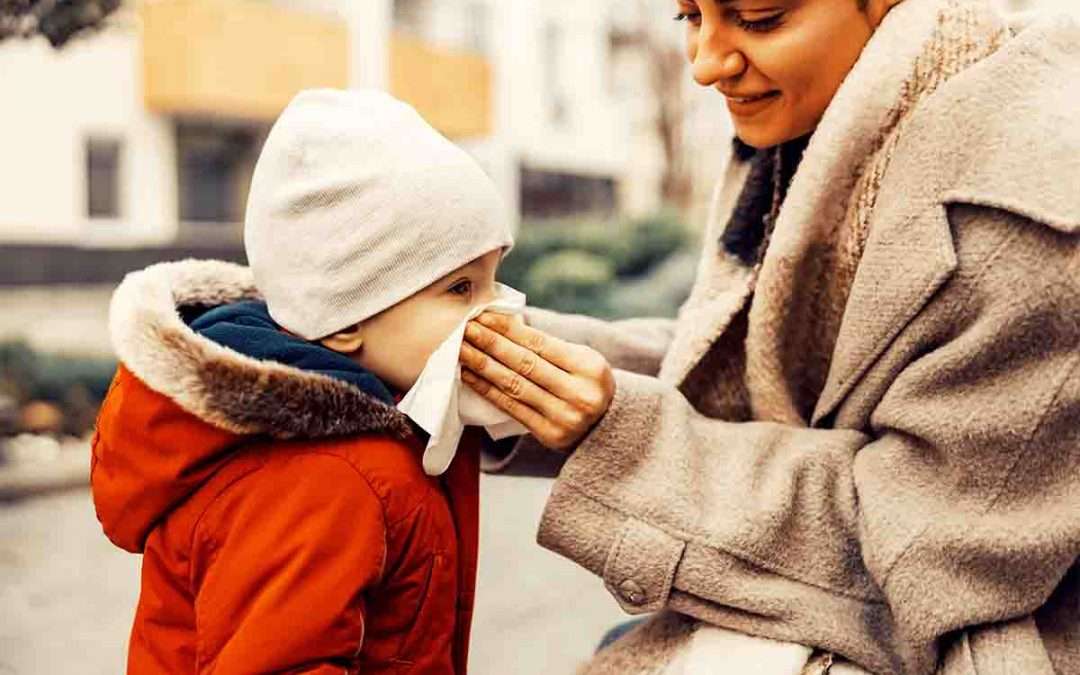Winter is finally upon us. Depending on where you live, you may have started to see some icy frosting on the nearby trees (or perhaps you live in California which pretty much never sees icy frosting). Regardless of whether you’re pulling out your knit pullovers or if you’re still strolling around in a t-shirt, winter allergies are real. For some people, a little too real. Just ask the 50 million Americans that suffer from winter allergies each year. Here are 4 things you should know about winter allergies.
1. The symptoms can sometimes be confused for a cold, flu, or even COVID-19.
The symptoms of an allergy can sometimes be difficult to differentiate from other respiratory illnesses, especially at that time of year where colds and flus are rampant. Particularly in the age of COVID-19, many people are worried that their runny nose is actually a sign they’ve been hit by coronavirus.
Allergy symptoms include:
- A congested and/or runny nose
- Cough
- Headache
- Sneezing
- Itchy skin and rashes
- Wheezing or difficulty breathing
- Itchy, watery eyes
The problem is, COVID-19 can also cause nasal congestion, a runny nose, headaches, and coughs.
However, you can usually tell the difference between the two by whether a fever is present or not – COVID-19 often includes a fever, whereas allergy never does.
With COVID-19, you may also experience muscle aches and a sore throat, where these symptoms are not typical of an allergy reaction. If ever in doubt, take a COVID-19 test.
2. Winter allergies are often caused by different allergens.
There is a caveat to this, as different parts of the world (and parts of the United States) have different types of trees and plants that respond differently to changes in the weather. Winter allergies are typically associated with indoor allergens, rather than outdoor ones. We become more affected by these allergens because we tend to spend more time indoors during the colder months. Indoor allergens include:
- Dust mites (and their poop). Although dust mites prevail even through summer, you may now be taking out all those heavy blankets and rugs as the temperature drops. Dust mites enjoy mattresses, carpets, rugs, blankets, and upholstery.
- Molds and mildew. Mold is a type of fungus that can release spores, which become airborne. It’s when these spores make their way into your airways that they cause problems. Molds and mildew thrive in damp, humid areas such as bathrooms or poorly ventilated basements.
- Animal dander. Though many people assume pet allergies come from their fluffy hair, it’s actually a protein found in their dander (shedding skin flakes), saliva, and urine that set off an allergic reaction in some. While pet allergies aren’t specifically a winter problem, during these colder months, soft-hearted owners tend to let their pets indoors more often, which is when it becomes a more noticeable issue.
If you live in California, you may find it is often pollen that triggers your allergy as the pollen count can be particularly high over December and January.
3. There are ways you can reduce the impact of your winter allergies without medication.
When it comes to indoor allergies, the solution may be as simple as keeping your house clean. To reduce dust mites (and dust), ensure you give your floors a good vacuum, including behind and beneath furniture. If you have curtains or rugs in your house, these should be cleaned regularly, as should pillows, blankets, and bedsheets. If you find dust mites are a particular aggravator of your allergies, you may even consider getting rid of potential dust mite hidey-holes around your home, such as unnecessary decorative cushions, rugs, and throw blankets.
If you have a furry friend whom your heart loves dearly but your sinuses do not, ensure they get a good pampering at frequent intervals with a thorough wash and groom. You can check with your vet or local pet groomer, but the usual recommendation is to bathe your four-legged pets once a week; too often and this can actually dry out their skin and release even more dander. And although many people love having the comforting weight of their best friend at the foot of their bed at night, try to keep animals out of the bedroom.
Avoid allowing areas of your house to remain damp and humid as this encourages the growth of mold and mildew. Keep your basement well ventilated, as well as your bathrooms. Mold can also grow behind sinks, so clean these areas regularly.
Cold air tends to be drier, which exacerbates allergy symptoms. You can use a humidifier in your home to improve this but be careful not to turn your house into a sauna because you’ll get the molds all excited. The usual recommendation is a humidity not over 50%.
4. Your Christmas decorations can be a source of allergens!
It’s alright, you can still put up a Christmas tree. Just be mindful that live trees can have mold living on them and some have also been sprayed with chemicals that can cause irritation. Fortunately, many artificial trees look just like the real ones nowadays! For your Christmas ornaments, consider glass, plastic, or wooden ones that attract (and retain) less dust than fabric ones.
Winter can be a wonderful time of the year for a number of reasons (Family! Food! Festivities!). However, allergies can put a damper on the celebrations if you can’t see the Christmas ham through your swollen, runny eyes. If you suffer from allergies, whether winter ones or not, speak to your family physician or ENT doctor about your options. You may be recommended antihistamines or even be referred for further investigations.

